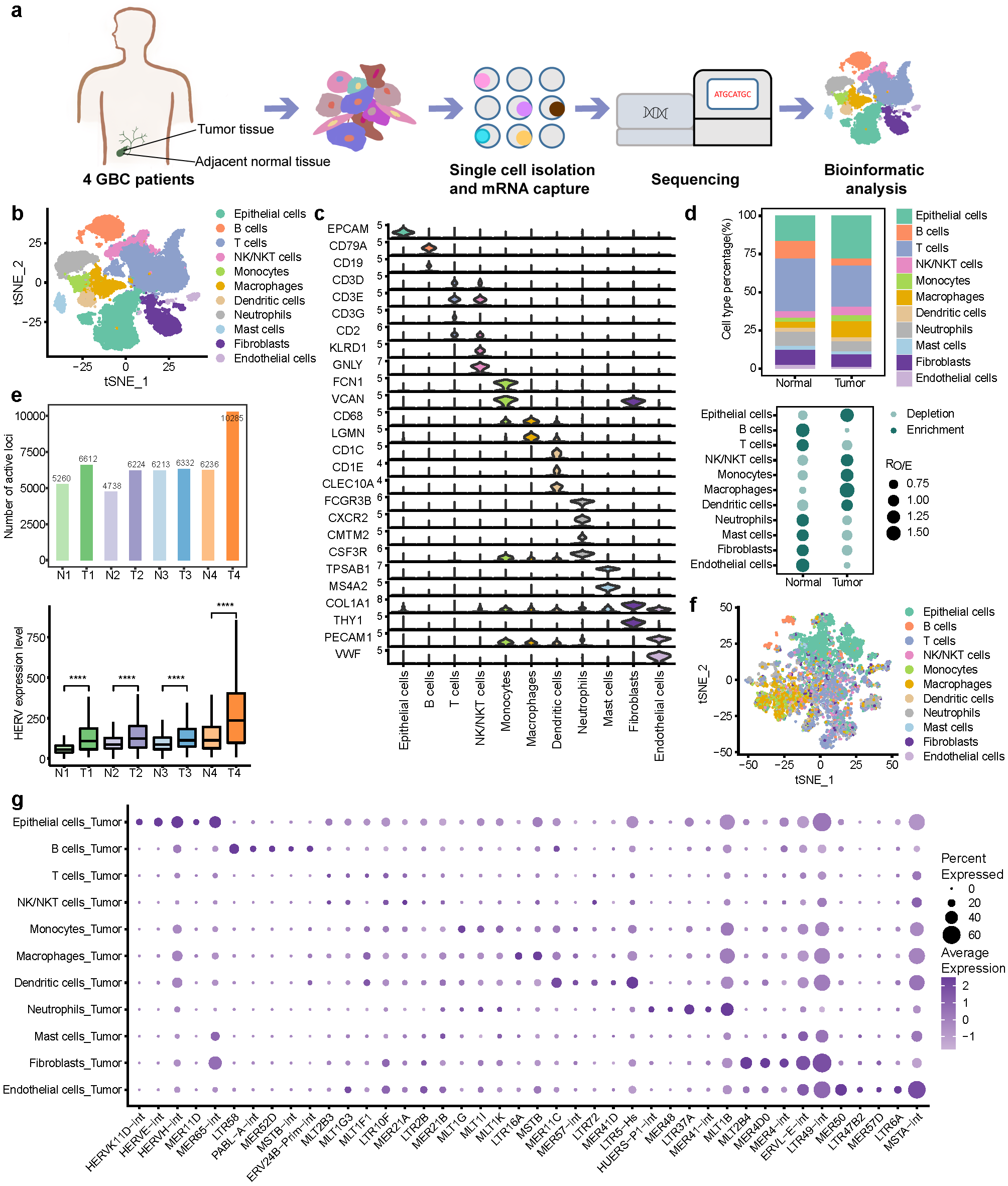Recently, Prof. CUI Jie’s group at Institut Pasteur of Shanghai, the Chinese Academy of Sciences has published an article in the journal eBioMedicine, entitled “Single-cell RNA sequencing highlights the functional role of human endogenous retroviruses in gallbladder cancer”, which explores the transcriptional landscape and potential functional impact of HERVs in gallbladder cancer by single-cell RNA sequencing.
Gallbladder cancer (GBC) is the most common biliary tract malignancy and is characterized by late diagnosis and poor prognosis. To improve this situation, continued efforts should be made to search for markers for early diagnosis and more effective therapeutic strategies. Human endogenous retroviruses (HERVs) are viral “fossils” in the human genome that originated from the integration of ancient exogenous retroviruses and were inherited according to Mendelian laws of inheritance, accounting for about 8% of the human genome.
HERVs have been reported to be reactivated in a variety of cancers and involved in cancer development and immunotherapy. Exploring the potential of HERVs as diagnostic markers and therapeutic targets has attracted much attention in recent years. Whether HERVs have implications on the GBC tumor microenvironment (TME) is worth exploring as it may provide new insights into the GBC clinical management.
In this study, CUI’s group performed single-cell RNA sequencing (scRNA-seq) in GBC tumor and paired adjacent normal tissues to dissect the cellular diversity and delineate the HERV transcriptional landscape for GBC. HERVs were found to be aberrantly activated in tumor-derived cells and expressed in a cell type-specific manner, which contribute to the tumor heterogeneity. For each identified cell type, HERVs with significantly elevated expression and their associated biological functions were identified.
In addition, CUI’s group experimentally confirmed that HERVs can serve as enhancers and potentially alter the expression of adjacent genes. The expression of HERVH was gradually increased as the malignant transformation of epithelial cells, suggesting that it may be a candidate for early diagnosis. Their findings also propose that HHLA2, which is derived by HERVH, may be an appealing target for GBC therapy.
This study highlights the important role of HERVs in GBC andoffers a novel perspective on cancer management.

Legend: Single-cell landscape and HERV expression patterns in GBC and adjacent normal tissues. (Image by IPS)
Contact
CUI Jie
Institut Pasteur of Shanghai, Chinese Academy of Sciences
E-mail: jcui@ips.ac.cn
Reference:
https://www.thelancet.com/journals/ebiom/article/PIIS2352-3964(22)00501-1/fulltext

